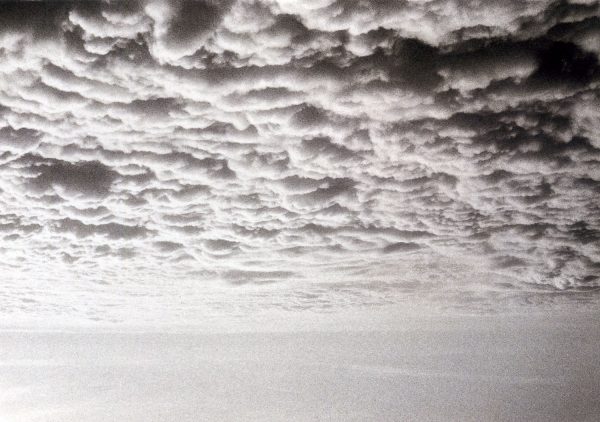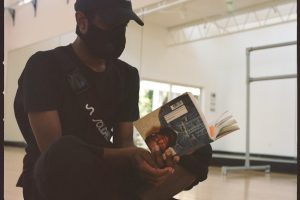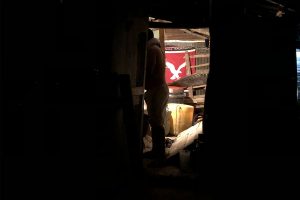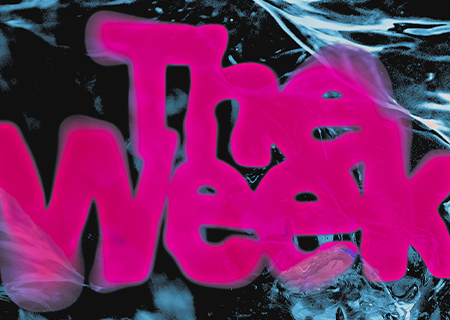Nika Son: “I often feel more connected to animals than to humans”

Nika Breithaupt (Photo: Pelle Buys)
Nika Breithaupt aka Nika Son aka Nikae is one of the most active and sensitive artists in Hamburg. Her versatile and multi-layered work bears witness to her ability first to allow things time to develop their full impact and then to listen and look very carefully before modifying and assimilating them creatively into her own work.
Nika’s most recent release is “To Eeyore”, a very special cartography of moments and feelings. Thomas Venker asked her some questions and exchanged a few thoughts with her via email to mark the occasion. All the photos for this article are from Nika Breithaupt‘s own archive and were mostly taken by her.
Nika, there’s a quote from Chris Marker on your website, “Cat listening to music”. What’s that about? Are you the cat?
Allon (Kaye) from Entr’acte had asked me to write a few words about the album. I don’t find it at all easy to write about my own music and I prefer to leave it to other people; so I was looking for a quote to use. I had recently been watching “Sans Soleil” again, by Chris Marker. I’ve been a big fan of his for a long time. His approach to music, sound and language in his visual essays, is something very special and is a great inspiration to me. His love of cats is another thing that connects me with him. There is a short film by Marker called: “Chat écoutant la musique” (Cat listening to music)” from 1988, where you see a cat sleeping on a
Yamaha DX7 keyboard to the sound of a simple piano melody. Unpretentious as this film may be, I think it’s beautiful and also characteristic of Marker’s way of “documenting”.
Anyway, my album is not only dedicated to Eeyore, the depressed, misanthropical donkey, but also to Pnin, my late tomcat, and so the quote fits quite well. And now for the craziest thing: I found out afterwards that Chris Marker had called this short film “Entr’acte” because at that time it was part of a trilogy called Bestiaire. Such “coincidences” are too good to be true.

Still aus “Sans Soleil” von Chris Marker
I‘m asking you this because on your website you not only describe yourself as a musician, artist, film sound designer and DJ, but also as an owl. So you are a shapeshifter and can adopt any number of animal forms? And the owl because you prefer to work creatively at night?
It’s funny how this quote from Marker makes even more sense to me now. The second part of his video tryptich is called “An owl is an owl is an owl…” He also spoke of owls as “cats with wings”.
Yes, I also like owls very much and if I were an animal I would most likely be an owl. I have been a night owl ever since I was a child. It was often pure torture for me to drag myself off to school because I had yet again been reading until the dead of night. I would also wake up again and again, listening to the creaking of the wooden staircase. Unfortunately my sleeping disorder has remained with me to this day, and also my preference for the night hours. My most creative phase is usually between 10 p.m. and 4 a.m., sometimes even until 8 a.m., when I slip into a strange, compelling state of mind. This is not exactly a healthy thing to do, especially for someone like me who doesn’t sleep well. The issue of sleep and insomnia has been with me for so long that it will probably never change. I keep struggling with myself, as our social life is based on a clear day-and-night rhythm and my preference for the early hours is incompatible with a lot of the activities during the day. A real owl wouldn’t care, of course. I guess I haven‘t got that far yet.

Pnin liest Pnin
Speaking of the animal kingdom, one of the tracks on your new album “To Eeyore”, called “Esel und Gespenst” (Donkey and Ghost), is a kind of naturalistic chamber-music piece, which gives one the feeling of being in a closed room as well as in a strangely cold outside world. The almost incomprehensible and metallically alienated vocal sound does the rest. What’s up with the donkey and the ghost?
Yes, you’re right, now that you mention it… there are actually quite a few animals. It’s probably because of my relationship to them. I often feel more connected to animals than to humans. The title “Esel und Gespenst” came to me after I had finished the track. During that time I had frequent conversations with the film critic and friend Olaf Möller about donkeys in films and about ghosts. We share the opinion that these two beings (and their natures) should definitely get more attention. The other reason is my great love for words. I think ‘Esel’ and ‘Gespenst’ are beautiful words. As soon as I have decided on a title I can hear it in the music, no matter whether it was chosen before or after finishing the piece. This surprises me over and over again.
- Stalaktiten
- Veddel nachts
Starting with that piece, maybe you can now say a few words about your way of working for the album? How did “To Eeyore” evolve?
This question is not so easy to answer because the pieces were produced in very different phases. It is not a concept album that happened all in one go. Some of the pieces, or their original versions, are more than two years old, and I’ve worked on most of them afterwards. Some of the pieces were produced in one session and I hardly had to arrange them at all, but with others, such as “Esel und Gespenst”, I worked a lot on the composition, recorded several sequences over and over again, shortened, changed, added single sounds and layers.
Voices, for example, I often assemble in advance as individual fragments before I weave them into the pieces. It’s rather a complex process, in which I have computer-generated voices with different accents speak texts which have been translated back and forth several times into different languages. This creates a strange fantasy language of its own. In these pieces I see myself more as a sound alchemist, mixing different elements until the right colour emerges.
Or until it bubbles and smokes enough. Most of the time I enjoy that just as much, but it gets exhausting if I spend too much time on one track. Then my perfectionism gets in the way and becomes a pain in the ass.
There is a great video by Helena Wittmann for the track “Fake News”, which unfolds very slowly, in synchrony with the music. At first everything seems to whizz around on one spot, but then narratives and sounds gradually spread out. What inspired you to write this piece?
“Fake News” is a piece that has developed from playing it live over a period of time. There was an earlier version, but then again it was modified a lot. I don’t normally work much with my own voice, but for this piece I used it deliberately. As with the computer voices I am interested in experimenting with real languages, with words that by manipulation become a fantasy language, an uncontrolled instrument. Whatever source the original text may have come from, whether from my own writing, collaged, discovered by chance or searched for… that is known only to myself. Encrypted, so to speak.

Nika Son (Photo: Helena Wittmann)
Who is Helena Wittmann? How did this collaboration come to be?
Helena Wittmann is a filmmaker, an artist and a long-time friend. We have known each other since our student days and have shared a studio or studio community for over ten years. We actually worked in one room for eight of those years, and it was then that we began our close collaboration, which has continued to this day.
My work as a sound designer and film composer basically began with the scoring of her films. We both have a very similar understanding of the special relationship between image and sound. Over the years several short films, her debut feature film “DRIFT” and joint videosound installations have been produced this way.

C, mit F#X (Photo: Phil Struck)
Nika, why didn’t you make the clip yourself? You are not only a musician but also a visual artist and have produced several video works in the past like “No You”, “Song For Tristesse” and “Eule sein”(Being Owl) – there it is again, the owl!
To be honest, I’ve never really thought about that. From the very beginning I have always wanted someone else to produce a video for my compositions. And Helena was the first person on my wish list. I think it’s much more exciting when someone whose artistic work you value translates your music into a visual language. Besides, I haven’t done any visual art for quite a while now. I do miss it, and that’s not really an argument for not making a video myself, but at the moment I prefer to work with music.
Speaking of your other artistic fields, how do they relate to each other? Do you draw up some kind of annual plan, like “the first half of the year I do musical projects, then an exhibition, then a video work…”?
No, not at all, I find it difficult to plan my creative work. I’m not very good at planning far in advance anyway, so I work from project to project and in between I make music. That sounds so easy, but unfortunately it‘s often not the case at all. I tend to do, or want to do, far too many things at the same time and then I‘m dissatisfied because one or the other has missed out again. I’m not a very well-organized person, in fact I’m not well organized at all, which often makes life difficult, especially as I do have to plan some projects a long time in advance. I am a chaotic person but a perfectionist as well. Very exhausting at times!

Memory 346
Listening to “To Eeyore”, it seemed to me that the arrangement of the pieces originated from vinyl dramaturgy, for example the first four pieces, “Pnin à Chartres”, “Fake News”, “Rhubarb” and “Matsutake”, are similar in character, oscillating between field recordings and abstract improvisation, while “Esel und Gespenst”, “Indefinite Cupboard”, “Insektenmagnetband” and “Sonntag”, seem to me to be held together by a whirring longing for movement. Am I right?
That’s a really interesting way of looking at it. Since the album was not made all in one go, as I have already mentioned, the sequence of the pieces was quite a challenge. I did think about it, but in the end it was a totally intuitive decision. I shuffled the pieces around a couple of times and suddenly it all fell into place. There are no profound reasons why this one is at the beginning and the other at the end.

Genesis, Zeichnung von Alex Solman
Nika, the timing for your album “To Eeyore” couldn’t have been worse. The official release date was March 20th. The only slight ray of hope was that Bandcamp waived their profit margin for all sales on that day, so that all the takings went directly to the artists and labels.
Let me ask you: Did you notice that people were buying a lot of music that day?
You’re right, the Bandcamp campaign was a nice little gift. It was as if I had planned a brilliant promo move in advance. I was lucky, under the circumstances, and I definitely had the feeling that many people particularly wanted to buy music on that day. They knew that everything was going to be passed on to the artists and so it was a way of demonstrating their solidarity in these difficult times. I was especially happy about the nice feedback from many people in response to my newsletter. However, I had a headache all day and started off with a digital shutdown because I couldn’t deal with the whole situation. To put it bluntly… the apocalypse begins and I promote my album. It was an unpleasant feeling, especially in view of what was happening on Lesbos and in Italy. When it comes to promoting my own thing I always get stomach cramps anyway, and at that particular time it was even more difficult…
That‘s what I call a First World problem.
The Golden Pudel Club, where you are resident DJ and where you hosted “Eruption“ (a festival in the spirit of Conrad Schnitzler) last year, is not only a social but also an important creative hub for you. Is there some sort of special network to deal with this present crisis?
Fortunately Hamburg has an very good club network and there’s a lot of solidarity between the various venues. Several different initiatives have been started to support one another, most notably a big fundraising campaign by the Hamburger Clubstiftung and the Clubkombinat. But I’m not involved in that myself. At the moment I don’t know anything more than what the media tells us. But apart from that there are ideas popping up everywhere on how to “open” the cultural sites virtually out of necessity. This has even been discussed at the Pudel, although whether or not, and if so, how, what, when and where nobody knows. But one thing is for sure, there won‘t be any video streaming of DJ sets.

Ozean
Let’s talk about Hamburg in general. I live in Cologne, a city that, despite all resistance, has suffered from the migration of many local protagonists and institutions to Berlin. How do you feel about Hamburg in 2020 compared to 2008, when you came to the city?
Of course, many things have changed since then that one could write about, but for me personally, such an incredible amount has happened in these past twelve years that I’m not sure how much it is me myself who has changed. If we take gentrification… one always thinks of it as a relatively “modern” phenomenon, but of course it has been going on for much longer. It’s just happening faster now. It’s a fact that important venues have disappeared here too. I still miss them and think that they would possibly no longer be able to survive in such a form now. For example the Kraniche bei den Elbbrücken, a really uniquely buzzing, freespirited concert club and art space that used to be free to do whatever it wanted. Unfortunately, and especially in Hamburg I would say, it is becoming more and more difficult to create such spaces. There are still some exciting venues or festivals which are subventioned initially, but in the long run they have little chance of survival. But who knows what will happen after corona…as Felix Kubin wrote in a recent mail… “We’ll simply all go underground again.”
Nika, you were born at the beginning of the 1980s in Bad Berleburg, a small town which (I had to look it up myself) is somewhere between Cologne and Kassel. How were your years as a teenager in the province?
I can’t remember anything about Bad Berleburg, I was only there until the age of two. I grew up in a small village between Augsburg and Munich, called Schiltberg, very definitely provincial too. A Bavarian catholic backwater. My mother is British, so for that reason alone we were considered to be a weird family. A difficult time, and for various reasons I fled when I was fifteen. First to Augsburg, for almost a year, then to England, which seems a bit crazy to me now. Actually I wanted to stay there forever and eventually become a marine biologist.
That was my big dream, to be under water. After spending two years at college and taking my A-levels there, I came back to Germany and finally ended up in Hamburg.
Do you think that those village years gave you a different cultural imprint from that of the inner city kids, who always had temptation right under their noses?
Y e s, d e f i n i t e l y!

Fog Azores
In the visual arts it is common practice to have a look at who has studied where and with whom. Among musicians this is still rather unusual. You studied art under Paco Knöller at the art academy in Bremen (HfK) and under Michaela Melián and Asmus Tietchens at the art academy in Hamburg (HfbK), both of whom are prominent musicians. To what extent have these two (or perhaps all three) left their mark on you?
There are so many things that have had a lasting effect on me. As far as the fine arts are concerned I originally started with painting and drawing, and Paco Knöller certainly influenced me in that area. He was a very good professor, I would say, in spite of the fact that after being in Bremen for two years everything drew me to Hamburg. I came to Michaela Melián quite late, because she only began her professorship at the HfbK one and a half years before I graduated. She was very committed to increasing the acceptance of sound as an important artistic medium at the academy. I was really glad when Asmus Tietchens was
appointed as a teacher at the HfbK, for his lectures were a great pleasure. Not only is he a wonderful storyteller, but I also felt very close to him music-wise. We’re still in good contact. Then, of course, there was the intensive Golden Pudel Club period…which had an enormous musical influence on me. When I was at the HfK in Bremen I had already started to experiment with slide projectors and their sounds.
When I think about it…maybe the Kodak Carousel slide projector was my secret trigger and signpost. It’s as if it was my first drum machine, whereas I wasn’t particularly interested in drum computers at that time. It certainly aroused my fascination for industrial sounds and my interest in the relationship between sound and image. The same applies to my discovery of Musique Concrète, which has affected my music significantly.

Hill Azores
Let’s get back to the current situation: In the mailout for your album you mentioned that both the release party at Ausland in Berlin as well as the tour had been cancelled because of corona. How does that affect you personally, economically and emotionally?
Well, what can I say. A week has now passed since the release and the world seems more and more surreal to me. Sure, I was or am very sad, especially because I had to wait so long for the release. But I’m one of so many artists who are in a similar situation, which puts everything into perspective. But it doesn’t make it less frustrating.

Kraniche tschuess
The evening at Ausland in Berlin meant a lot to me and its cancellation was particularly sad. The event had been planned a long time in advance and was followed by an invitation from Ausland to organize an evening both artistically and curatorially. I had invited Beatriz Ferreyra, Container, Vernon & Burns, Franziska Windisch, Juditha Haeberlin with a piece by Rebecca Saunders, Nina, Allon Kaye and Mika Taanila with his film “Tectonic Plate”. I mention them all now, because I hope so much that we’ll be able to get together at a later date
this year. There’s still hope, but right now everything concerning the future is up in the air. The same applies to the tour, of course. We will see…
Economically…pffff.
How important is social networking as a basis for you as an artist?
Social networking is definitely important to me, otherwise I don’t think I would ever have organized any events. The creative exchange of ideas, the collaborations and friendships that have developed over the years as a result of social networking are very important to me. On the other hand, I’m also a bit of a loner and very prone to social stress. Nowadays, most social networking takes place on the Internet. The pressure on me as an artist and organizer to be active in the social media is often just a burden to me. It’s simply not my world. Especially now, during the corona crisis, when almost everything has been shifted online, I long for the analogue world even more. Let’s see what is going to change after the crisis…in any case we will all go out there with funny hairstyles.
Nika Son „To Eeyore“ is available on vinyl via Entr’acte and digital via Bandcamp.
















